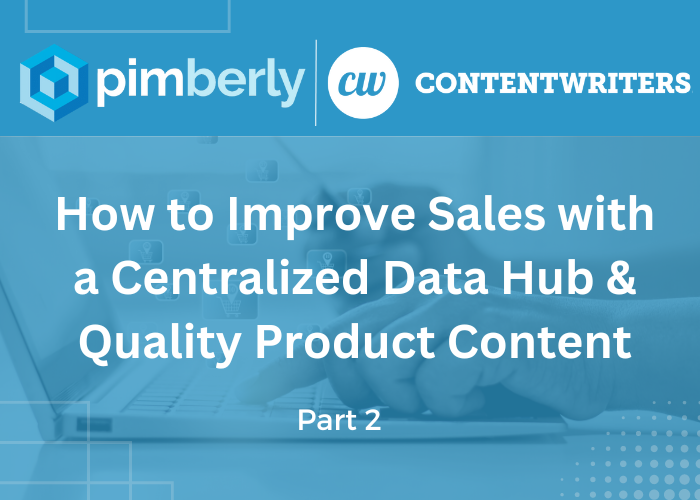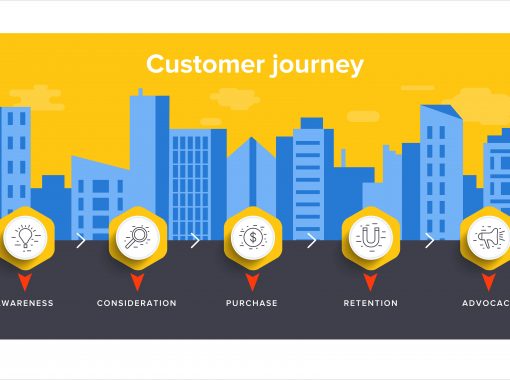
How to Improve Sales with a Centralized Data Hub & Quality Product Content: Part 2
For Part 1 of this blog series, visit the Pimberly blog.
From videos to blog posts, whitepapers, educational material, and everything in between, people are consuming online content at higher rates than ever before.
All eCommerce businesses should harness the power of content through a strong SEO writer to grow their reach, connect deeply with consumers, and convert. In this post, we’ll go over how SEO content can help your eCommerce business drive sales.
How Do I Optimize eCommerce Content for Sales?
Use the following SEO content tips to help you optimize your eCommerce sales:
Product Descriptions
eCommerce customers don’t get to feel, smell, hold, etc., the products they purchase online as in-person customers do. This means your product description, including romance copy and feature bullets, plays a pivotal role in helping convince customers that your product is worth buying. Through keywords and other SEO tools, your product descriptions can also help new customers find your products and services online.
Category Pages
Category pages target keywords for when people search for brands, collections, and specific groups of products. Since your eCommerce category pages likely won’t have as much text as other pages, it can be difficult to optimize these pages for SEO. To stay easily discoverable, make the most of title tags and meta descriptions — the most influential on-page elements for SEO.
FAQs
FAQs (Frequently Asked Questions) allow you to use keywords and valuable content to boost your SEO score while providing a lot of value for your audience.
Consumers these days don’t have the patience to pick up the phone and call a business when they have a question. Instead, they’ll simply move on to the next business that popped up in their Google search and could address their questions.
To avoid this, make sure you have an FAQ page on your website that answers common questions about your products, including:
- How and where they’re made
- Instructions for operation or care
- Important policy or warranty information
- Shipping details
Be sure to research or ask your sales team what people are asking so that you can have the answer to common questions accessible online.
Blog Content
Blogs are a powerful for SEO because they can organically include keywords you want to rank for while providing evergreen content and thought leadership. You can also add pictures and photos to blog content and promote the post on social media to increase engagement.
Social Media
A strong social media presence can help your eCommerce store reach new consumers while fostering strong relationships with your audience. The power of social media lies in the re-share.
When you consistently post valuable, educational, or entertaining content, you increase your audience by way of people sharing your content with their followers, exposing you to more and more networks.
Social media also harnesses the power of connection and lets you form relationships with your customers. Be sure to reply to all social media messages and comments — the good and bad — to boost engagement and let your customers know you’re interested in getting to know them and listening to their wants and needs.
Email Newsletters
Email newsletters are another tool to help you use keywords to build brand awareness and provide high-quality content to your subscribers. To properly optimize your email newsletter, make sure your copy uses keywords to link directly to your site or specific products. It’s also crucial to make sure the emails have attractive subject lines and display well on mobile devices.
Manufacturing Details vs. Unique Copy
Instead of copying and pasting product information from the product manufacturer’s website, write unique content and product descriptions. This will improve your chances of ranking among competitors, showcase your company’s brand voice and style, and inform buyers considering your products.
Unique and valuable content that resonates deeply with them and explains why they need your products and/or services will go much further than bland and generic manufacturer product descriptions.
Leveraging a PIM for Accurate, Up-to-Date Content
Product Information Management, or PIM, is the process of managing the data required for marketing and selling products. PIM software works to manage complex product data and digital assets in one centralized platform, enabling brands, manufacturers, and retailers to streamline their work.
PIM can help ensure your content is up-to-date and accurate by ensuring you always know how many of each product you have in stock, what colors are available, and expected shipping times, etc.
When working with an agency like ContentWriters or your copywriting team, provide as much information about your products as possible. This will ensure the latest details are shared with your potential customers and the highest quality content is published on your site.
People Also Ask
How is data used to create content?
Data helps in copywriting by providing the SEO writer with up-to-date information on key facts about who the audience is, including what they’re looking for, their background, education, income, and more. This allows you to tailor your content exactly to your target audience’s needs.
How is data used in content strategy?
Data can be used to market your most popular products, update customers on items they’re interested in, and increase your site’s visibility to target buyers. Using data is key to growing your eCommerce business and remaining competitive in your industry.
How do you create product content?
ContentWrites has a rigorous vetting process for assigning industry-specialized and SEO-skilled writers to our clients. Our dedicated account management team will select writers based on your style guidelines, SEO strategy, and product copy needs to manage content creation at scale.
To learn more about Pimberly, and other benefits of leveraging a PIM with a content writing service, you can visit their site for Part 1.
Relevant Pimberly Reads:
- Creating the Perfect Product Detail Page
- Using PIM to Hit Fashion and Apparel eCommerce KPIs
- The Business Case for PIM




